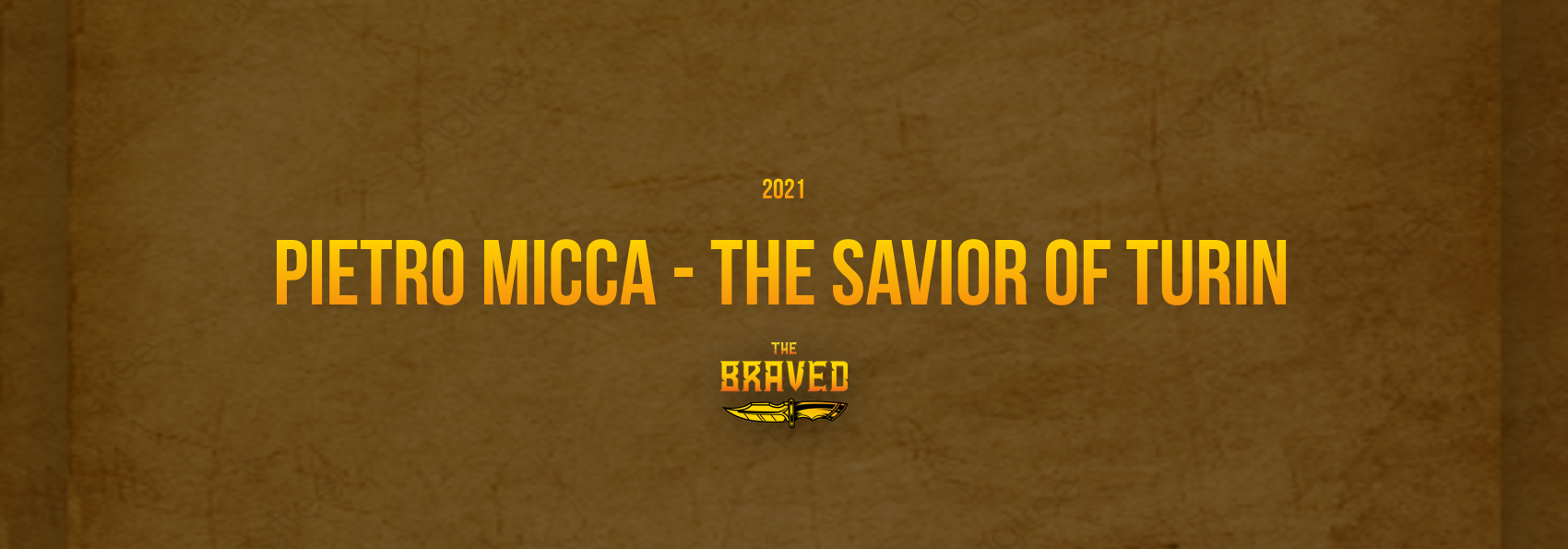In 1706, a Sabaudian private gave his life to stop the French in the siege of Turin. If it weren’t for Pietro Micca, the citadel would surely have fallen. This is how the story goes.
The Early Life of Pietro Micca
We don’t know all that much about Pietro Micca or Pierre Micha. His mother, Anna Martinazzo, gave birth to him in a village called Andora in what is now the region of Piedmont in northwest Italy. In his youth, he worked as a bricklayer. By 1706 at the latest, he joined the Sabaudian army, serving as a sapper at the rank of private. At the time, Sabaudia was a state under the Savoyard state, which the House of Savoy ruled.

The Siege of Turin
From the 2nd of June to the 7th of September 1706, the French besieged the Savoyard capital city, Turin. This was a part of the War of the Spanish Succession. At the centre of Turin, which is now a part of Italy, stood a fortified citadel. A large portion of the citadel existed underground in a series of tunnels and chambers. There were also 15 kilometres or 9.3 miles of tunnels purposed for counter-sapping. As a sapper, Micca worked in the tunnels. He created additional tunnels and fortified the network with bricks. If the French tried to tunnel their way into the citadel, Micca and his fellow sappers might have detected their movement and put a stop to it. They would achieve this by setting gunpowder beneath the enemy tunnels and blowing them up.
Pietro Micca’s Sacrifice
On the 29th of August 1706, the defending Savoyard soldiers were burning their dead in a trench. The French used this to their advantage. At night, and under the cover of smoke, a group of French grenadiers snuck into a trench and attacked the Savoyard soldiers guarding an entrance into the citadel’s tunnel network. The grenadiers slaughtered them and then made their way into the network’s upper level. Micca was nearby and heard the attack. With a fellow soldier, he barred the door to the next level of the tunnel network. A moment later, the grenadiers were bashing at the other side of the door. Micca knew that if the grenadiers broke it down, the French would spill into the core of the citadel and soon seize the city. In anticipation of a situation like this, there were two barrels of gunpowder by the door.
Micca turned to the soldier at his side and implored him to run. Then, with the French grenadiers a moment from bursting through, he lit a short fuse and put it in one of the barrels. Unfortunately, Micca failed to get clear of the explosion. As a result of his charred, shattered body, as well as the carbon dioxide gas discharged in the blast, he perished. As for the French, they took a fireball to the face. Most of them died then and there or suffered terrible wounds. Micca’s bold actions bought the citadel’s defenders time to brick up the tunnel and save the city of Turin.
Remembering Pietro Micca

Italy remembers Pietro Micca as a hero. A state of Micca stands in Turin, and a museum in Turin honoured him by taking his name. The Italian Regia Marina named several naval vessels after him, too. Even Andora, where Micca was reborn, was renamed Andora Micca in the sapper’s honour. In 1938, Italian director Aldo Vergano released a historical war film portraying Micca’s life and death. On the other side of the coin, some argue that Micca didn’t mean to risk his life; he simply misjudged the length of the fuse.
On the 7th of September 1706, a relief force commanded by Austrian Prince Eugene assaulted the French en masse, forcing a retreat. Despite the French numerical advantage, the House of Savoy came out of the conflict on top. If it hadn’t been for Private Pietro Micca, things might have been very different.
